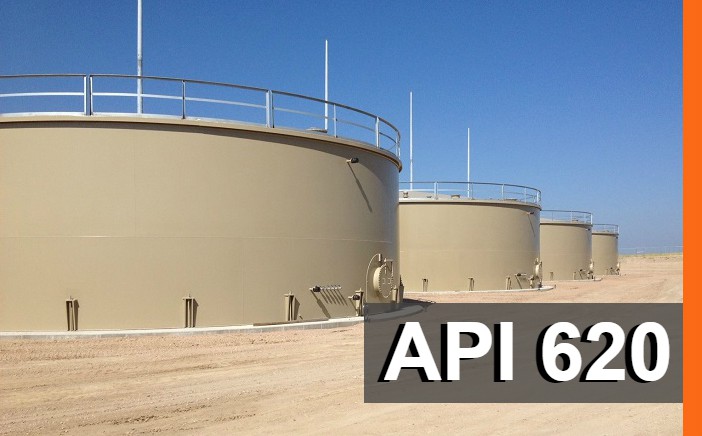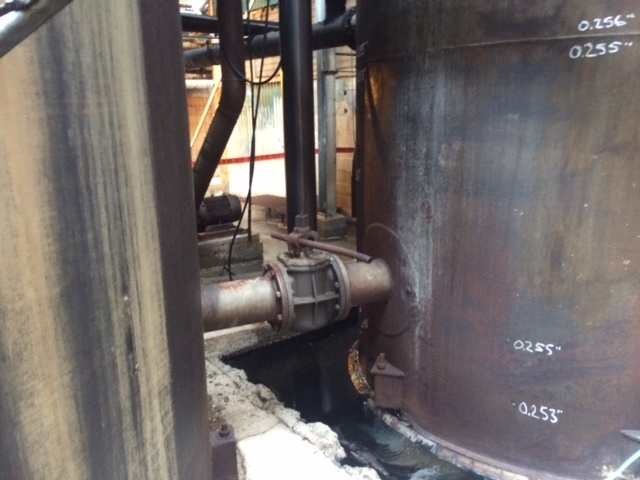Learning About the Requirements That Govern API 650 Welding Inspection
Wiki Article
A Step-by-Step Consider the Installation Process of Welding Inspection Techniques
Welding inspection is a crucial process that guarantees architectural honesty and safety and security. The setup of assessment strategies entails a number of systematic steps, each indispensable to attaining trusted outcomes. From planning and device selection to performing aesthetic and non-destructive tests, each stage demands careful focus. Comprehending these procedures can considerably boost top quality guarantee in welding jobs. What challenges emerge in executing these techniques, and just how can they be successfully addressed?Comprehending the Importance of Welding Examination
Welding assessment is a vital component of making certain structural honesty and security in building and construction and production procedures. This method involves examining welded joints for flaws, ensuring that they fulfill specific requirements and regulations. By methodically gauging weld high quality, assessors can identify problems such as splits, voids, and insufficient blend, which can jeopardize the stamina and resilience of frameworks.The significance of welding assessment expands beyond instant safety worries; it helps avoid pricey failures and possible hazards in the long-term. Efficient examination methods foster conformity with industry standards, thus boosting the overall reliability of bonded parts. On top of that, a robust evaluation procedure adds to maintaining the track record of builders and manufacturers, as it assures clients of the quality of their projects. Inevitably, recognizing the value of welding examination is critical for advertising secure building and construction techniques and making certain the long life of crucial framework and items.
Choosing the Right Tools for Evaluation
When picking the proper tools for evaluation, it is necessary to ponder the particular needs of the welding process and the materials entailed. Various assessment methods, such as visual, ultrasonic, and radiographic screening, necessitate unique devices tailored to their special needs. For visual assessments, devices like magnifying calipers and glasses are critical for assessing weld top quality. Ultrasonic screening requires specialized devices efficient in sending and receiving sound waves to identify inner defects. Radiographic testing, on the various other hand, makes use of X-ray or gamma-ray resources alongside sensitive film or digital detectors to expose variances.
Furthermore, personal safety tools (PPE) is necessary to guarantee the safety and security of assessors throughout analyses. Picking the right devices not just boosts the precision of examinations but also contributes to the general stability and security of the welding job. As a result, a detailed understanding of readily available devices and their applications is important for effective welding inspection.
Getting ready for the Evaluation Process
Prior to starting the inspection procedure, it is crucial to develop an extensive plan that outlines the extent and goals of the evaluation. This strategy must consist of specific criteria that specify what comprises acceptable high quality in the welding job being examined. Identifying the relevant codes and criteria is important, as they will certainly direct the assessment criteria and techniques.In addition, workers associated with the examination must be adequately educated and certified in welding examination techniques to assure integrity and accuracy. A checklist can be beneficial in organizing the numerous aspects of the examination, varying from tools readiness to environmental problems that can impact the assessment.

Finally, logistical considerations such as scheduling, available sources, and interaction in between team members should be dealt with. By preparing systematically, assessors can boost the efficiency of the assessment and guarantee that all crucial factors are properly thought about before continuing with the assessment itself.
Carrying Out Aesthetic Assessments

Carrying out aesthetic examinations is an important step in the welding assessment procedure, calling for careful preparation to guarantee effective assessment. Inspectors need to know with vital defect indicators that can signal potential issues in weld quality. By concentrating on these facets, one can boost the general dependability of the evaluation end results.
Preparing for Visual Evaluation
Visual inspection functions as a crucial first step in the welding inspection process, guaranteeing that any kind of possible flaws are determined early (API 650 Welding Inspection). Appropriate preparation is essential for effective aesthetic assessment. Examiners should start by examining appropriate documentation, consisting of welding treatments and specifications, to understand the task demands. They must collect needed tools, such as multiplying glasses, flashlights, and ideal personal safety devices (PPE) An extensive examination of the examination area is essential; assessors ought to verify it is cost-free and clean of blockages. Additionally, it is very important to establish ideal illumination conditions to improve visibility of welds. By taking these preparatory actions, inspectors can develop an environment favorable to identifying disparities and ensuring the stability of the bonded frameworksKey Flaw Indicators
A complete understanding of essential flaw indicators is crucial during aesthetic assessments to ensure the high quality and security of welded joints. Inspectors ought to concentrate on details signs such as splits, porosity, damages, and incomplete fusion. Splits might show up as sharp lines and can jeopardize architectural integrity. Porosity materializes as small holes that can damage weld stamina. Undercuts, which are grooves along the weld edge, can cause stress concentration. Insufficient fusion indicates that the weld metal did not appropriately bond with the base product, causing a weak joint. By methodically recognizing these issues, inspectors can ascertain compliance with industry standards and enhance the overall reliability of bonded frameworks, inevitably adding to more secure functional problems.Carrying Out Non-Destructive Checking Methods

Countless non-destructive screening (NDT) methods are important to ensuring the integrity of welded frameworks without jeopardizing their performance. These methods allow assessors to review weld high quality and find issues without triggering damage to the materials being examined. Typical NDT techniques consist of ultrasonic screening, radiographic testing, magnetic particle testing, and dye penetrant testing. Each approach serves a specific objective, attending to different sorts look at this website of defects such as cracks, porosity, or insufficient fusion.
Applying NDT methods requires an organized approach, starting with choosing the ideal method based on the materials and the nature of the weld. Educating employees in these techniques is vital for exact outcomes. Additionally, establishing clear procedures and requirements warranties uniformity throughout the examination procedure. By integrating NDT into the welding examination workflow, organizations can improve the integrity of their items while decreasing potential risks connected with structural failures. This positive technique inevitably adds to keeping safety and security and quality requirements in welded buildings.
Documenting and Examining Assessment Results
Efficient documentation and analysis of inspection results are essential components of the welding assessment process. Accurate records of inspection searchings for work as a recommendation for high quality guarantee and conformity with market standards. API 650 Welding Inspection. Inspectors need to make use of electronic platforms or structured kinds to log information such as the sort of weld, examination techniques employed, and any kind of disparities determined during the analysisThorough evaluation is important once information is collected. This entails comparing results versus established standards to identify fads or repeating issues. Analytical tools might be employed to evaluate problems and analyze their influence on overall weld high quality.
Reliable communication of findings to pertinent stakeholders is vital. Reports and summaries should be clear and concise, highlighting key insights and suggestions for corrective activities. By methodically recording and examining assessment outcomes, organizations can foster continuous improvement in welding practices and improve item stability.
Regularly Asked Questions
What Credentials Are Needed to Become a Welding Examiner?
To become a welding assessor, one generally requires pertinent accreditations such as AWS CWI, in addition to experience in welding methods, knowledge of welding codes, and effectiveness in inspection techniques to assure high quality and safety and security criteria.How Typically Should Welding Inspections Be Performed?
Welding examinations must be performed consistently, usually after each weld is completed, and regularly throughout projects. Elements such as project complexity, sector requirements, and regulative demands can influence the frequency of these evaluations.What Is the Cost of Welding Assessment Providers?
The price of welding inspection solutions differs considerably based upon factors such as task intricacy, place, and size. Generally, prices range from $100 to $150 per hour, with additional costs for specialized testing and certifications.Are There Certifications for Welding Inspectors?
Yes, there are different accreditations for welding assessors, consisting of those used by the American Welding Society (AWS) and the International Institute of Welding (IIW) These qualifications guarantee examiners have the necessary skills and expertise for effective evaluations.
How Do I Pick an Evaluation Service Company?
To pick an you could try these out assessment solution company, one should evaluate certifications, experience, industry track record, and customer testimonials. In addition, comparing service offerings and rates can assist assure the chosen service provider fulfills certain task needs efficiently.In addition, personnel entailed in the examination should be sufficiently educated and accredited in welding evaluation strategies to guarantee reliability and precision. Conducting visual inspections page is an important action in the welding evaluation procedure, requiring cautious prep work to assure reliable assessment. Visual inspection serves as an important first action in the welding evaluation process, ensuring that any kind of possible problems are recognized early. Reliable paperwork and evaluation of evaluation results are essential components of the welding inspection procedure. Welding evaluations must be conducted frequently, usually after each weld is completed, and periodically throughout projects.
Report this wiki page